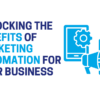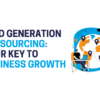Optimising a website in order to generate sufficient leads requires a combination of different strategies. The process takes more than simply adding a “Click Here” and a “Sign Up” button on the web page. You must understand the concept of lead generation and implement techniques accordingly in order to optimise your website for the most effective lead generation…
How Does Lead Generation Work?
The process is simple. The prospect (potential customer) clicks on a call to action if they find it interesting. The call to action then directs them to a landing page where they usually fill in a form and are then taken to a ‘thank you’ page. The person going through this process then becomes a ‘lead’.
How well are your current techniques working? You can figure this out by:
• Using marketing tools to evaluate the lead generation sources
• Comparing landing page performances
• Running internal reports that count clicks and shares for your website
Once you have an idea of how much improvement your lead generation process actually needs, you can set goals accordingly. Based on those goals, you can improve the conversion rate by optimising your web page.
Optimising the Lead Generation Process
The purpose of making your web page interesting is to increase the rate of conversion. No matter how much traffic you are getting on your page, it is useless unless the traffic is being turned into leads and ultimately generating revenue for you. So, you must optimise the whole process of lead generation from start to finish. We recommend focusing on the following three factors:
1. The Call to Action (CTA)
Your visitors must be encouraged to click on your call to action button, so you need to make sure that the CTA is both tempting and useful for the visitor. If they are looking for a particular product and the page doesn’t focus on their need, they are bound to lose interest. To make your CTA more accessible to the visitors, you should use contrasting colours, promote attractive offers, and select interesting images. It is also a great idea to use prominent, attention-grabbing techniques to surprise your visitors. For example, a slide in CTA is a good way to catch the prospect’s attention.
2. The Landing Page
The next important factor of the lead generation process is the landing page. Having a lot of landing pages for your website can work better than having only a few. The more attractive and inviting a landing page is, the more likely a visitor will complete the form and entering their information. We recommend that landing pages are clearly set our and easy for the prospect to navigate.
3. The ‘Thank You’ Page
The final step of this process is when the visitor is directed to the ‘thank you’ page. It’s always a good idea to provide a link to the offered content on the ‘thank you’ page. This will showcase your products and services and can encourage the visitor to follow the links and consider buying them.
Once you have optimised your web page, you should always test it and record any improvements in lead generation. If you succeed in developing an interesting web page, the leads will take care of themselves and your biggest focus will be following up on them.
The Lead Generation Company
Follow the tips we have mentioned here and you are sure to see your sales soar. To learn more about B2B lead generation support – get in touch.
To know more about our products and services, contact us today on 0333 344 3470, email:info@theleadgenerationcompany.co.uk
Watch our videos:
https://vimeo.com/180172696
LinkedIn: https://goo.gl/QRL3Kf
Twitter: @theleadgencomp


















